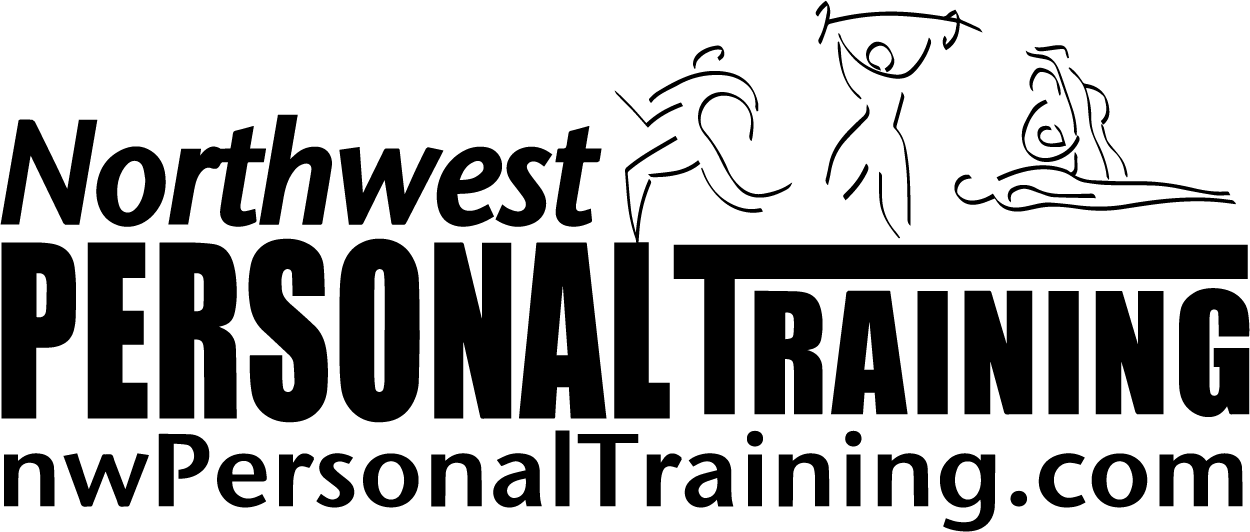Dear clients, friends and family,
Since the weather in most of the country requires many of us to be exercising indoors at this time of year, I thought I’d provide some tips on Indoor Cardio training. I hope this gives you some good ideas.
• The American College of Sports Medicine recommends a frequency of 3-5 cardio workouts per week, a duration of 20-60 minutes and an intensity of 60-90% of your maximum heart rate each week to maximize cardiovascular fitness. Investing in a heart rate monitor will definitely keep you honest!
• If you are using indoor cardiovascular machines, try staying on the same machine for only about 10-15 minutes and jumping from machine to machine instead of staying on the same machine for extended periods of time. This will create better muscle balance. It’s better for someone to spend 10 minutes on each of the stairmaster, rowing machine, bike, treadmill and elliptical rather than spend 50 minutes just on the stairmaster. If you are using the same machine or performing the same activity all the time, the muscles targeted with this exercise will continue to get fitter but the other neglected muscles will get weaker and muscle imbalances are sure to surface. By varying your machines you will develop a more overall toned physique and reduce your risk for repetitive stress-type injuries. And finally, mixing up your indoor machines will also help to prevent boredom. Most exercisers have no difficulty going for a 2 hour bike ride outside but after 10 minutes on a stationary bike you start to go stir-crazy!
• It doesn’t matter what machine you’re on, it’s imperative that you maintain proper posture. This includes contracting your abdominals to stabilize your spine and maintaining proper alignment by lifting up and out through your chest and keeping your shoulders back.
• Most indoor machines offer a variety of program options. Try to avoid getting into the habit of always punching in the same program and the same level each time you workout on a machine. Mix it up. One workout try the steady climb program and the next time, try the intervals. Then go for the hill or the random program. Each program will challenge your body in a different way.
Treadmill Tips:
• Make it a goal to not hold onto the rails while jogging or walking. Instead, use your muscles to balance and support your body.
• Keep your abdominals contracted, look forward and avoid swinging your arms side-to-side and crossing the mid-line of your body.
• Once a month, try a time-trial workout. Program in a distance like 5km (3miles) and record how long it takes you to complete. Next month, try it again and this time try to go a little faster. As you get fitter, you should be able to perform the same distance in a shorter period of time.
Eliptical Trainer Tips:
• If your Eliptical does not have poles, do not lean onto the rails. Instead, develop the balance and stability to use the machine without holding on. Pump your arms just like you were running.
• While exercising, make sure that you’re knee caps always point forwards. Avoid allowing your knees to collapse inwards.
• While exercising, try to keep the weight of your body distributed evenly on all 4 corners of your feet. Avoid allowing your arches to collapse inwards – avoid pronating.
• Once a month, try this workout test. Program in a 10 minute manual workout. Record how far (in miles or kilometers or steps climbed) you get at the completion. Next month, try it again and this time try to go a little farther in the 10 minute time-frame. As you get fitter, you should be able to go further and further in 10 minutes.
Stairmaster Tips:
• Do not hold onto the rails while on the stairmaster. Most people hold on for dear life and take fast, choppy little steps. This technique is very ineffective at burning calories and maximizing fitness goals. Most of you will find that you’ll have to reduce the level you normally perform at once you let go of the rails, because your muscles will have to work so much harder to support your body weight. This increased intensity will get you results much more quickly and you’ll find you’ll also develop good balance and stability.
• The next important tip is to make sure that your steps are not too shallow. Think about the height of a step you would take while walking up the stairs and strive for this. Remember to work through the full range of motion. Tiny, fast steps are not effectively engaging the lower body muscles and instead, using a lot of momentum.
• Try not holding onto the rails for 40 seconds and then holding on for 20 seconds. Do this for 10 minutes.
Recumbent Bike Tips:
• The most common error with technique on a bike is seat adjustment. It’s important to position the seat so that you are positioned neither too far back or too close. When the leg is in a fully extended position, you should only have a slight bend in the knee. Make sure your knee is not maintaining a large bend throughout the entire cycle and vice versa, make sure that the seat isn’t positioned so far away that you have to rotate your hips to spin.
• Because you’re reclined back, it’s easy to slouch while riding. Remember to keep upright posture throughout the entire workout. Keep your abdominals contracted inwards, your chest lifted and shoulders back.
• Program in a hill workout and try to keep your RPM’s (how many times your legs cycle in a minute) constant even while climbing the hilly parts of the program. This will be a leg-burner!
Yours in health and fitness,
Sherri McMillan
